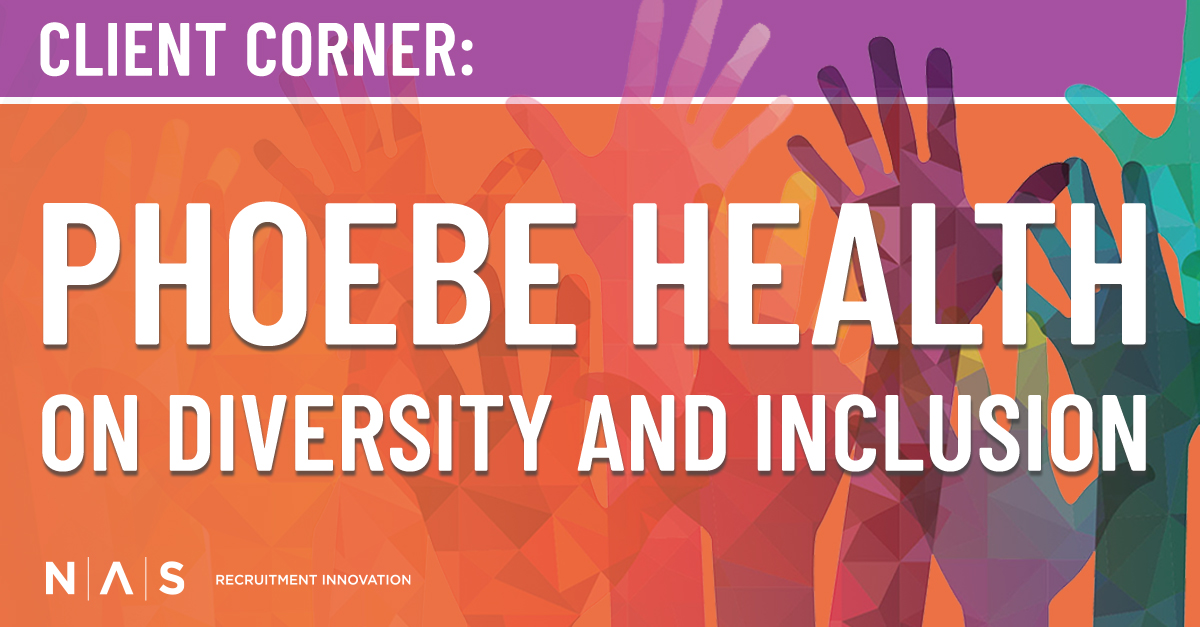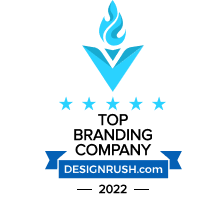-
How Phoebe Health makes diversity and inclusion a priority: a conversation with Bruce Mattos
Posted by Jennifer R. Henley, PHR & SHRM-CP | Chief Customer Officer on June 24th, 2022 
As the first in a series of conversations with our client partners on a variety of topics, we approached Bruce Mattos, Associate Vice President, Corporate Director Talent Acquisition at Phoebe Putney Health System to discuss diversity, equity, inclusion and belonging (DEIB). Phoebe Health has been evolving quickly in this area over the past few years and his perspective on the topic reflects the growing emphasis that organizations of all types have placed on DEIB efforts.
Jennifer: From your perspective, why are diversity, inclusion and belonging important for Phoebe Health?
Bruce: For us, diversity, inclusion and belonging are such a part of the community we represent that it was essential for us to embrace these concepts. We went all out in 2020 – and we took on this initiative to support our employees, the community and our patients.
Jennifer: What are some of the steps you took to get started on your DEIB journey?
Bruce: We started with leadership – to get buy-in and support for the internal changes that would need to take place. A number of efforts began rather quickly. We developed a Diversity Council of over 50 members to set goals and create plans. We also started employee resource groups so our employees could participate, share, build networks and even educate us on areas where we could improve.
Jennifer: What impact did the new approach have on your recruiting efforts?
Bruce: 15-20 years ago, it was about quotas. Today, it’s about finding people who want to be part of the mission and values of the organization because we serve the community. We walk the walk every day. It’s about taking a more thoughtful approach to recruiting. Now, every leadership, recruitment and search committee has a Diversity Council member as a part of it to bring a diverse slate of candidates whenever possible. We identify schools and programs that are reflective of our community and work with them to find candidates who fit our roles. And we developed videos on the importance of belonging to share with employees and candidates, letting them know that they deserve to be here and are welcome.
35% of HR leaders say diversity, equity and inclusion are among their top five priorities for 2022.Source: Clear Company
Jennifer: How do these efforts around diversity and inclusion become a part of your internal communications and re-recruiting strategies?
Bruce: I hope that organizations continue to look at DEIB not as an initiative but as a part of their being – why they are there. It’s about diversity of thought and it’s about equity across the board. Making sure everybody has the same opportunities, gets paid equitably based upon their experience, has access to training.
It’s also about communicating. We have a newsletter that goes out monthly, sharing something unique around diversity and inclusion. For example, we might highlight that the cafeteria is representing foods from a certain culture to acknowledge their heritage.
As a veteran, I’m proud that we’ve been able to host a Veteran’s Day celebration to recognize every veteran employee at Phoebe Health. The military affairs committee from the city of Albany gives each one a pendant to thank them for their service. Our organization is so open to celebrating these things.
76% of employees and job seekers say diversity is important when considering job offers.Gen Z is the most racially and ethnically diverse generation ever.
- 52% identify as white
- 25% as Hispanic
- 14% as Black
- 6% as Asian
- 5% as another race or two or more races
Source: Clear Company
Jennifer: How do you leverage data to promote fairness and equity at Phoebe Health?
Bruce: Everybody must report the data and the analytics on their efforts. That is helpful because it allows us to set up the roadmap of where we want to be. It’s important for the future health of the organization. What is the makeup of the board, leadership and employees at every level? If it is not representative, how do you change that? Analytics will help you make better decisions based on the customers you serve. And quite frankly, it’s the right thing to do.
Data needs to tell the story that leads you to make adjustments and changes. If your data is right and proper, then it becomes strategic. For example, we pulled demographic and salary information and it showed no real disparities. We looked at where we were underrepresented so we could plan targeted efforts to bring in people. It also allows us to target different communities we represent to make sure we have staff representation that aligns.
The Harvard Business Review reported that the most equitable and inclusive organizations monitor demographics across the entire employee lifecycle, including:- Hiring
- Representation
- Retention
- Advancement
- Job Satisfaction and Engagement
- Employee Resource Group Participation
- Accessibility
- Leadership
- Suppliers
Source: Culture Amp
Jennifer: Simon Sinek, a leadership expert, has said that “customers will never love a company until the employees love it first.” Culture drives employee engagement and employee engagement drives customer experience. How does Phoebe Health’s culture impact your people?
Bruce: Phoebe Health is a 113-year-old organization and the first non-segregated hospital in the South. What does that mean from a culture perspective? Let’s start with that one premise – that we serve the community. We provide quality healthcare for everybody regardless of their station of life. Our mission is: We make every life we touch better.
But as a part of that, we must treat our people well. In a hospital environment in particular, if you’re not showing the same level of care, love and quality towards your employees that you show your customers and patients, people are going to leave you.
Prior to the pandemic, we maybe didn’t do as good a job as we could have. Employees started to speak up and now we listen. In 2018, our leadership started making big changes in how we approach employee engagement because our employees wanted a stronger voice.
We also started training leaders and reminding them to re-recruit employees every day so they stay. Let’s be kind and come back to the golden circle of why we’re here. It comes from listening and understanding. The most important thing is to teach your leaders empathy. It’s about treating others with dignity and respect, and it drives your culture.
74% of millennial employees believe their organization is more innovative when it has a culture of inclusion.47% actively look for diversity and inclusion when sizing up potential employers.
Source: Deloitte
Inclusive companies are 1.7 times more likely to be innovative.
Source: Josh Bersin
Jennifer: Any final thoughts on what you’ve learned so far and what has made your DEIB efforts so impactful?
Bruce: Every day, you need to remind your employees why we’re here. It has to be about hope, healing and recovery – simple principles. We need to bring people together. Hold guided town halls and listen to your employees. Host them at different times to let your team hear each other’s voices. Finally, educate your Talent Acquisition team and ask what other ideas they have to share that can further our efforts and create a better workplace. All these efforts are opportunities to make the employment experience better for our employees and our services better for our patients.
Need ideas and assistance in taking your DEIB strategies to the next level – or any other area of recruitment marketing? Contact us and we’ll start a conversation.
Jennifer R. Henley, PHR & SHRM-CP | Chief Customer Officer
Jennifer Henley is a trusted authority in recruitment solutions and consultative client services. She possesses the Professional in Human Resources (PHR) and SHRM-CP designations, is a proud member of MAHCR, NAHCR and SHRM, and is a featured speaker at HR communications industry conferences and events nationwide.



